We need your consent to use the individual data so that you can see information about your interests, among other things. Click "OK" to give your consent.
ASTM D6480-05(2010)
Standard Test Method for Wipe Sampling of Surfaces, Indirect Preparation, and Analysis for Asbestos Structure Number Concentration by Transmission Electron Microscopy
STANDARD published on 1.10.2010
The information about the standard:
Designation standards: ASTM D6480-05(2010)
Note: WITHDRAWN
Publication date standards: 1.10.2010
SKU: NS-35317
The number of pages: 16
Approximate weight : 48 g (0.11 lbs)
Country: American technical standard
Category: Technical standards ASTM
The category - similar standards:
Annotation of standard text ASTM D6480-05(2010) :
Keywords:
asbestos, surface sampling, TEM, wipe sampling, Asbestos, Asbestos structure number concentration, Structural analysis/applications, Structural building materials/applications, Transmission electron microscopy (TEM), Wipe sampling methods, ICS Number Code 13.300 (Protection against dangerous goods)
Additional information
| Significance and Use | ||||||||||
|
This wipe sampling and indirect analysis test method is used for the general testing of surfaces for asbestos. It is used to assist in the evaluation of surfaces in buildings, such as ceiling tiles, shelving, electrical components, duct work, and so forth. This test method provides an index of the concentration of asbestos structures per unit area sampled as derived from a quantitative measure of the number of asbestos structures detected during analysis. This test method does not describe procedures or techniques required for the evaluation of the safety or habitability of buildings with asbestos-containing materials, or compliance with federal, state, or local regulations or statutes. It is the user's responsibility to make these determinations. At present, a single direct relationship between asbestos sampled from a surface and potential human exposure does not exist. Accordingly, the user should consider these data in relationship to other available information (for example, air sampling data) in their evaluation. One or more large asbestos-containing particles dispersed during sample preparation may result in large asbestos surface loading results in the TEM analyses of that sample. It is, therefore, recommended that multiple replicate independent samples be secured in the same area, and that a minimum of three such samples be analyzed by the entire procedure. |
||||||||||
| 1. Scope | ||||||||||
|
1.1 This test method covers a procedure to identify asbestos in samples wiped from surfaces and to provide an estimate of the concentration of asbestos reported as the number of asbestos structures per unit area of sampled surface. The procedure outlined in this test method employs an indirect sample preparation technique. It is intended to disperse aggregated asbestos into fundamental fibrils, fiber bundles, clusters, or matrices. However, as with all indirect sample preparation techniques, the asbestos observed for quantification may not represent the physical form of the asbestos as sampled. More specifically, the procedure described neither creates nor destroys asbestos, but it may alter the physical form of the mineral fiber aggregates. 1.2 This test method describes the equipment and procedures necessary for wipe sampling of surfaces for levels of asbestos structures. The sample is collected onto a particle-free wipe material (wipe) from the surface of a sampling area that may contain asbestos. 1.2.1 The collection efficiency of this wipe sampling technique is unknown and will vary among substrates. Properties influencing collection efficiency include surface texture, adhesiveness, and other factors. 1.2.2 This test method is generally applicable for an estimate of the surface loading of asbestos structures starting from approximately 1000 asbestos structures per square centimetre. 1.3 Asbestos identification by transmission electron microscopy (TEM) is based on morphology, electron diffraction (ED), and energy dispersive X-ray analysis (EDXA). 1.4 This test method allows determination of the type(s) of asbestos fibers present. 1.4.1 This test method cannot always discriminate between individual fibers of the asbestos and nonasbestos analogues of the same amphibole mineral. 1.4.2 There is no lower limit to the dimensions of asbestos fibers that can be detected. However, in practice, the lower limit to the dimensions of asbestos fibers, that can be detected, is variable and dependent on individual microscopists. Therefore, a minimum length of 0.5 μm has been defined as the shortest fiber to be incorporated in the reported results. 1.5 This test method does not purport to address all of the safety concerns, if any, associated with its use. It is the responsibility of the user of this test method to establish appropriate safety and health practices and determine the applicability of regulatory limitations prior to use. |
||||||||||
| 2. Referenced Documents | ||||||||||
|
Similar standards:
Historical
1.10.2013
Historical
1.2.2008
Historical
1.4.2008
Historical
1.4.2013
Historical
1.11.2012
Historical
1.10.2010
We recommend:
Technical standards updating
Do you want to make sure you use only the valid technical standards?
We can offer you a solution which will provide you a monthly overview concerning the updating of standards which you use.
Would you like to know more? Look at this page.


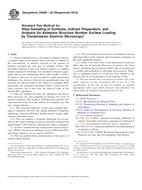
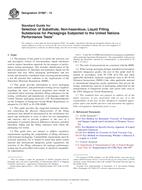 ASTM D7887-13
ASTM D7887-13 ASTM E1191-03a(2008)..
ASTM E1191-03a(2008)..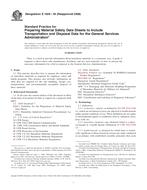 ASTM E1628-94(2008)..
ASTM E1628-94(2008)..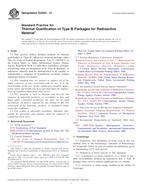 ASTM E2230-13
ASTM E2230-13 ASTM E2292-04(2012)..
ASTM E2292-04(2012)..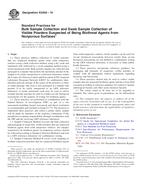 ASTM E2458-10
ASTM E2458-10
 Cookies
Cookies
